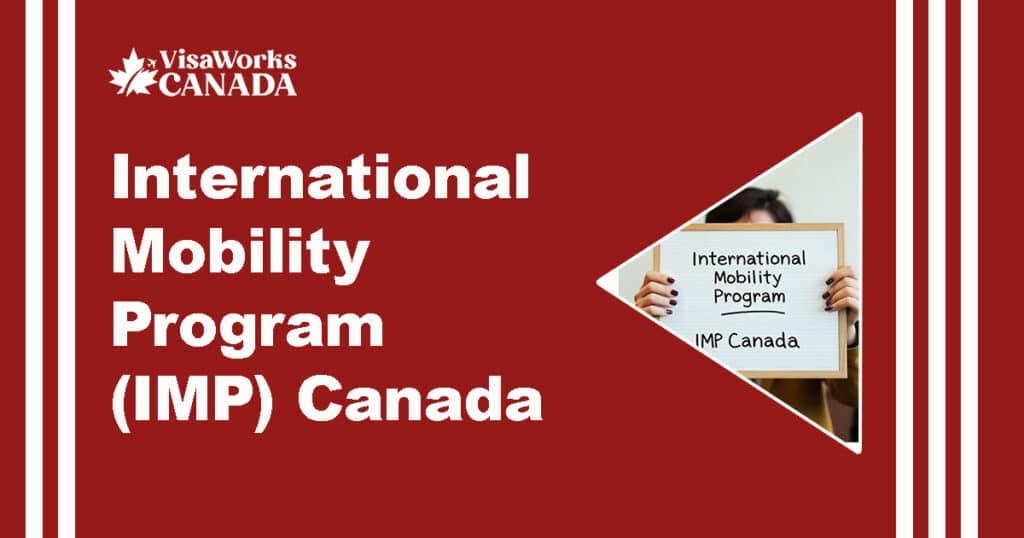The International Mobility Program (IMP) allows employers in Canada to hire foreign workers on a temporary basis without needing a Labour Market Impact Assessment (LMIA). This is a significant advantage for employers and workers alike, as it simplifies the hiring process, making it faster and less bureaucratic.
Table of Contents
ToggleIn contrast to the Temporary Foreign Worker Program (TFWP), which issues work permits depending on specific labor market conditions, the IMP is designed to serve Canada’s broader economic and cultural interests. Through this program, foreign workers can fill positions that enhance Canada’s economy, culture, and international relations.
What is the International Mobility Program?
The International Mobility Program is a collection of streams that enable Canadian employers to hire foreign workers without needing to go through the LMIA process. It allows quicker processing times and more flexibility in hiring for specific roles.
The program includes work permits based on international agreements, such as the Canada–United States–Mexico Agreement (CUSMA), intra-company transfers, and individuals bringing significant social or cultural benefits to Canada.
Key Differences Between IMP and TFWP
The Temporary Foreign Worker Program (TFWP) is heavily labor-market driven, requiring employers to prove they’ve attempted to hire Canadian workers before bringing in foreign talent. This requires the LMIA, which can be time-consuming and expensive.
On the other hand, the IMP skips the LMIA, allowing companies to hire international talent without these hurdles. This makes it an attractive option for employers needing foreign expertise quickly or for roles that have reciprocal international agreements.
Categories of the IMP: Who Can Benefit?
The IMP covers several work permit categories that cater to different types of workers, from multinational company transfers to international graduates. Below are some of the key streams within the program.
Intra-Company Transfers
Companies with branches or affiliates in Canada can transfer workers from their international offices to Canadian locations under the Intra-Company Transfer stream. This allows businesses to utilize global talent to meet their local needs without going through the LMIA process.
Employees transferred under this program are typically high-skilled workers or executives, making it a crucial component for multinational businesses operating in Canada.
International Agreements and Free Trade Agreements
The IMP also facilitates work permits based on international trade agreements, such as CUSMA (formerly NAFTA), CETA, and the Trans-Pacific Partnership. These agreements allow foreign workers from partner countries to work in Canada without an LMIA.
For example, CUSMA allows workers in certain professional roles to move between the U.S., Mexico, and Canada with ease, promoting international business and cooperation.
Post-Graduation Work Permit (PGWP)
International graduates who have completed their studies in Canada can apply for a Post-Graduation Work Permit (PGWP). This allows them to gain valuable Canadian work experience, which can later support their permanent residency application.
The PGWP is one of the most popular streams under the IMP, helping graduates transition smoothly from student life to professional careers in Canada.
Significant Benefit to Canada
Workers who can provide a significant social, economic, or cultural benefit to Canada may qualify for a work permit under the IMP. This includes roles that help boost Canada’s culture, such as artists, musicians, or those involved in community-based projects.
One example is the Mobilité Francophone initiative, which encourages French-speaking foreign nationals to work outside Quebec, promoting cultural diversity and language development across Canada.
Explore Our Services
Application Process for the International Mobility Program
Applying for a work permit under the International Mobility Program is relatively straightforward, but there are several key steps that both employers and applicants must follow.
Employer Responsibilities
For certain streams within the IMP, employers need to submit a job offer through the Employer Portal, providing details about the position, wages, and job requirements. A compliance fee of $230 applies unless the applicant holds an open work permit, such as a PGWP.
The process is much quicker compared to LMIA-required programs, with many IMP streams offering a two-week processing standard for eligible applications.
Worker Responsibilities
Applicants must ensure they meet the criteria for their chosen stream. For example, intra-company transfers need to prove their role within the company and the transfer’s benefit to the Canadian branch.
Documents such as proof of employment, educational qualifications, and identification must be provided to support the work permit application.
Work Permits Without an LMIA
The LMIA process, while crucial for many immigration programs, can often be a hurdle for businesses looking to hire international talent quickly. By bypassing this requirement, the IMP makes it easier for employers to hire skilled workers without the time and expense of labor market testing.
This not only benefits businesses but also allows workers to start their roles sooner, creating a win-win scenario for both parties.
Work Permit Extensions and Bridging Work Permits
Under the International Mobility Program, workers can apply for work permit extensions if their employer wishes to keep them in Canada beyond the initial permit’s expiry date. This is particularly common for intra-company transfers or those working under international agreements.
Additionally, foreign nationals transitioning to permanent residency can apply for a Bridging Open Work Permit, allowing them to continue working while their residency application is being processed.
IMP’s Role in Canada’s Economic and Cultural Growth
The International Mobility Program plays a significant role in Canada’s economic development by allowing businesses to attract the best talent from around the world. It also fosters cultural exchange through programs like Mobilité Francophone, ensuring Canada remains a global leader in both business and diversity.
Why Choose VisaWorks Canada Ltd. for IMP Assistance?
Navigating the International Mobility Program can be complex, but that’s where VisaWorks Canada Ltd. comes in. From expert visa services to comprehensive guidance on permanent residency, study visas, and business ventures in Canada, we’re here to help you navigate every step of your journey. Contact us now for personalized assistance and start your process today!
FAQs
What is the difference between the TFWP and the International Mobility Program?
The Temporary Foreign Worker Program (TFWP) requires an LMIA, while the IMP does not. The TFWP is labor market-driven, while the IMP is based on broader economic and cultural interests.
What types of work permits fall under the IMP?
The IMP includes work permits under international agreements, intra-company transfers, post-graduation work permits, and more.
Do I need an LMIA for an IMP work permit?
No, an LMIA is not required for work permits under the International Mobility Program.
For more information on how we can assist you with your work permit or immigration journey, reach out to VisaWorks Canada Ltd. and take the first step toward your future in Canada.








